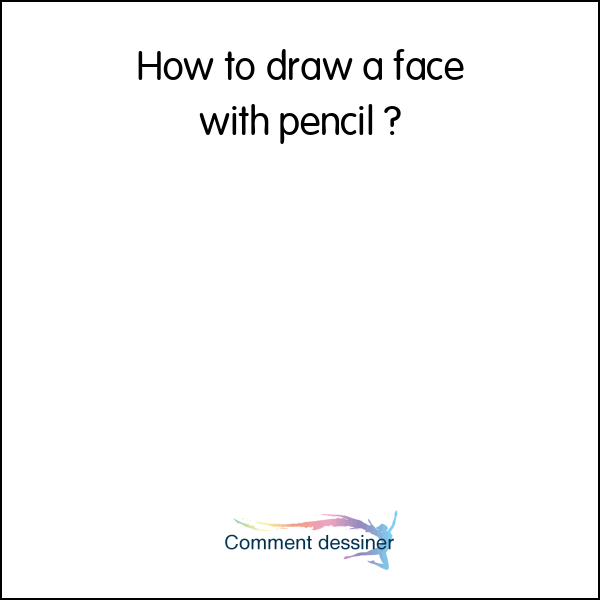Preparing the Drawing Tools
Before starting to draw a face with pencil, it is important to gather the right supplies. It is a good idea to purchase a quality pencil set with a range of graphite grades and a kneaded eraser. A pencil sharpener is also necessary to maintain a sharp point for details. Once the supplies are gathered, it is time to prepare the surface. A heavy paper or sketch pad should be used with a hard surface underneath. This will prevent the paper from being marked by the hard surface beneath.
Now that the tools are ready, it is time to move on to the basics of portrait drawing. Drawing a face with pencil does not have to be difficult, but it does take practice. A basic understanding of the facial features and proportions is essential for a successful portrait. Knowing the different types of pencils and the pressure used to create the desired effect is also important. Additionally, knowing the basics of shading, such as hatching, cross-hatching, and stippling, will help create a realistic portrait.
Understanding the Basic Structure
Drawing a face with pencil requires an understanding of the basic structure of a face. Start with a basic oval shape. Then, divide the oval into five equal parts by drawing two horizontal lines and two vertical lines. This will help create the basic proportions of the face. Next, draw the eyes at the top line and the nose and mouth at the bottom line. As the drawing progresses, adding the basic structure of the face, such as the jawline, cheekbones, and chin, will help create the desired effect.
Once the basic structure is in place, it is time to begin adding details to the face. Start with the eyes, which are typically the most important feature of any face. They should be placed about one-third of the way down the face and should be slightly slanted to give the face life. Then, draw the nose and mouth in the appropriate proportions. The nose should be placed in the middle of the face, with the mouth slightly lower.
Adding Details to a Face
Once the basic structure and features of the face are in place, it is time to add details. This can be done with a variety of pencils and erasers. A light-grade pencil can be used to add shadows, while a medium-grade pencil can be used to create highlights. Using an eraser can also help create a more realistic look by adding highlights and shadows. Additionally, adding details to the hair, such as curls, braids, and fringe, can help to complete the portrait.
Once the details are in place, it is time to add shading. Start by using light pencil strokes to add shadows and highlights to the face. The longer, darker strokes can be used to create shadows, while the shorter, lighter strokes can be used to create highlights. Hatching and cross-hatching techniques can also be used to create a more realistic portrait. Additionally, stippling can be used to create the illusion of texture.
Finishing the Portrait
When the portrait is complete, it is time to add the finishing touches. Erasing any excess pencil lines will help to create a cleaner look. Additionally, adding color to the portrait can bring it to life. Colored pencils or watercolors can be used to add color. Once the portrait is complete, it is important to take a few steps back and look at the finished product. This will help to ensure that the portrait is exactly what the artist envisioned.
Making Adjustments
Once the portrait is complete, it is important to make any necessary adjustments. This can be done with a kneaded eraser or a blending stump. The kneaded eraser can be used to lighten any areas that are too dark, while the blending stump can be used to smooth out any hard lines. Additionally, adding additional details or shading can help to further enhance the portrait.
Final Thoughts
Drawing a face with pencil can be a rewarding experience. It takes practice and patience, but with the right tools and techniques, anyone can create a realistic portrait. Understanding the basic structure of a face and adding details with pencils and erasers can help to create a realistic portrait. Finally, making adjustments with a kneaded eraser or blending stump can help to give the portrait a more finished look. By following these steps, anyone can learn how to draw a face with pencil.
Drawing a face with pencil can be a great way to practice and improve drawing skills. Additionally, creating realistic portraits can be a great way to capture memories and to celebrate family and friends. With the right tools, anyone can learn how to draw a face with pencil.
